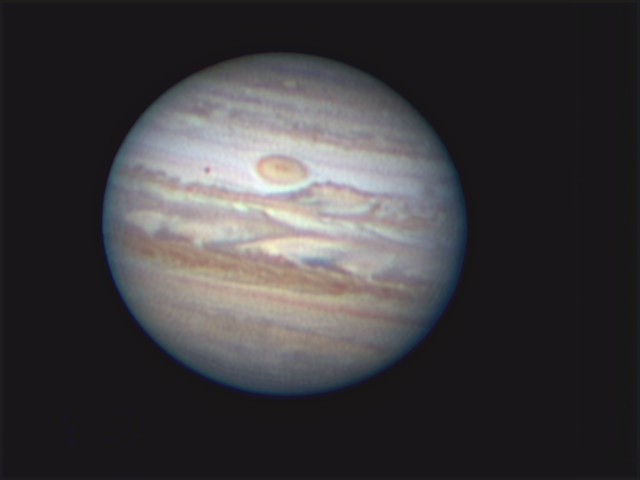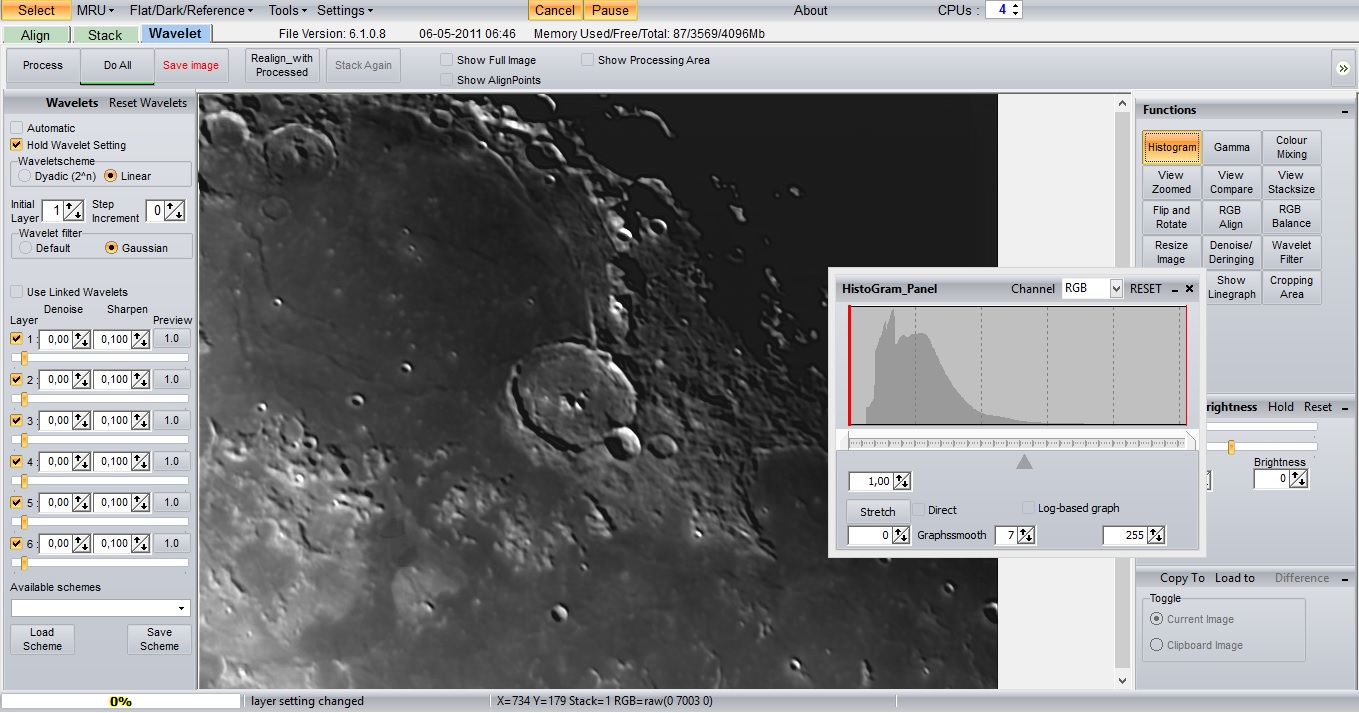And so it begins: you got some nice shots of the Moon, and now you are hungry for more and better images.
Registax 6 is a powerful and mature stacking program containing sophisticated and great image enhancement features. It is designed specifically for stacking images and frames from video files and is the program of choice for many astronomers and astrophotographers thanks to its simplicity of use. Flipview Software for Mac Devices: Hand Control Firmware Updates: Hot Pixel Removal Tool: iCap 2.4 Camera Control Software: Italian To Spanish Fix: Micro Capture Pro Software - Mac Version 2.3.2 Updated 6/15/13: Micro Capture Pro Software - Windows Version: Microscope Imager Software and Driver: Microsoft Mike and Mary voices: Microsoft Speech.
After understanding how lunar imaging works (use the shortest possible exposures, shoot RAW if possible, etc.), the simplest thing you can do to improve your image quality is to shoot for image stacking.
Image stacking is a technique common to all kinds of astrophotography that improves the signal-to-noise ratio in the final image by combining together a sequence of images of the same subject.
Here is a quick guide to introduce you to Lunar (and Planetary) image stacking.
What is Moon Stacking And Should I Do It?
Image stacking, whether for the Moon, a planet, a distant deep-sky object, or our majestic Milky Way, always begins in the field by taking a photographic sequence of your target.
The sequence can be a series of long exposures or a short movie clip (preferably with a high frame rate): the first case is the standard for deep sky astrophotography, while movies are served to solar, lunar, and planetary astrophotography.
But the differences between Moon Stacking and image stacking for Deep Sky Objects, DSO, run deeper than just how the image sequence is captured, and lie in how the images and video frames are aligned and combined.
Regardless of your target, image stacking consists of three main steps:
- The images in the sequence are scored by quality (relatively to the best one in the sequence).
- The selected number of images (say the best 20%) are aligned to the image of reference (usually the one with the best quality).
- The aligned images are then combined into a single photo, for example, by averaging for each pixel their pixel-values across the sequence.
But for DSO, the image alignment is done using stars, while for the Sun, the Moon and the planets, the image alignment is done using either global features or aligning points (either user-defined or generated automatically).
Because of these crucial differences, only a few astrophotography software (Pixinsight, for example) can stack deep sky and lunar/planetary images: most of the time, you have to use different software for the different types of targets.
But don’t worry: image stacking is a highly automated process that will take you only a few clicks to get it done.
And shooting for image stacking, at least for the Moon and the planets, does not require extra gear: you can shoot the moon from a fixed tripod with a 600 mm lens and still be able to stack from a few tens of images to a hundred or so before the Moon will start moving out the frame.
So, yes: you should always shoot for image stacking and then decide what to do with the data you have collected.
Before going on though, let me remind you of an old, universal saying that is very pertinent to image stacking: garbage in, garbage out. This means that it is always best to stack fewer images of better quality than stack a lot of images with mediocre image quality.
If you want to know more about the image stacking technique and what software is available, have a look at this article we published just a few months ago.
Does Stacking Sharpen A Picture Of The Moon?
The short answer is: no, it does not. Technically speaking, stacking will not sharpen your image.
By being more detailed and having a better signal to noise ratio, though, it may look more crisp, but the real magic of image stacking will shine through with the editing.
For sharpening Moon and planetary images, a well known technique is wavelets sharpening.
The free software for Windows (now abandonware, I’m afraid) Registax, and Lynkeos for Mac OS X and SIRIL (multiplatform) offer this type of sharpening, among others.
Commercial software such as Astra Image and Pixinsight also offer wavelet sharpening.
As with all editing techniques, the difficult part is to know when sharp is sharp enough.
The best way is to be subtle with the editing: pixel peep often at your image, and if you see artifacts pull back with the sliders 🙂
Can I Stack Images On Windows or Mac (Or Both)?
The truth is that there is more free astrophotography software for Windows than for any other operative system out there.
If you are a Mac or Linux user and want to access the Windows free software, you could use WINE (at least if you are running a version of Mac OS X older than Mojave).
Since Apple dropped the support for 32-bit software with Mojave, for us Mac users with up-to-date computers, using WINE is no longer an option. At Least until WINE will not be able to compile 64-bit software.
If you are one of us, you are left with creating a Windows Virtual Machine using Virtualbox, Parallels, or VMware, or installing Windows with Bootcamp. Either way, you need a valid Windows license.
But do not despair just yet: the quest of finding good astrophotography software for Mac and Linux is not without hope 😉
Stacking Software (Suitable For The Moon And The Planets)
You can argue you can do everything in Photoshop, so you don’t need anything else. While this may be true in theory, in practice it will be a gigantic pain in the neck, particularly if you recorded video and have thousands of images to grade and align.
Even if you are a Photoshop Master, you should turn to specific software for this.
Unfortunately, it seems that the Moon and planets don’t get much love these days, as dedicated image stacking software is far less common than for deep sky astrophotography.
At the best of my knowledge, and at the time of this article, this is the complete list of available software to stack solar, lunar, and planetary images.
Windows Software

- Registax (Free, but abandonware)
- Avistack (Free, but abandonware)
- Autostakkert! 3 (Freeware)
Mac OS X Software
Registax Download For Windows 10
- Lynkeos (Freeware)
Cross-Platform Software
- Pixinsight (Commercial)
- Planetary System Stacker (Freeware)
The most common program is Autostakkert! 3, which is often used in combination with Planetary Imaging PreProcessor (PIPP) to prepare the images (format conversion, crop, resize, planet detection, etc.) and Registax for wavelet sharpening.
Lynkeos is a very nice piece of software offering advanced functions like Lucky-Richardson and Wavelet Sharpening, Deconvolution and Chromatic alignment. It is somehow difficult to get consistent results and it takes a bit of time to get to know it well.
I recently discovered Planetary System Stacker (PSS) and I am hooked. Compared to the other software, PSS is the new kid in town and sits at the top of the game. Fast, simple to use, it rivals Autostakkert! 3 for the quality of results, particularly for Moon shots.
How Do You Stack Moon Photos?
To illustrate the general workflow in stacking lunar images, let’s assume we have used our DSLR camera with a 400mm telephoto lens to photograph the entire lunar disc.

Registax 6 For Mac

Let’s also assume we shot our sequence using RAW images to get the best editing flexibility. But just so you know, things will not be different if you did a video clip.
In this article I will not cover the actual work in the field: how to photograph the Moon, what gear you need, what settings are recommended, etc. If you want to know more about this, I invite you to have a look at our guide about Moon photography.
Pre-Process The Sequence: Culling
Remember the golden rule: garbage in, garbage out.

Even if the software will grade the image by their quality, it is always good to go through the single images and remove those frames showing obvious problems, such as motion blur from vibrations or very poor seeing.
Besides, this is a great way to check if anything interesting happened during the sequence: a plane or the ISS passing in front of the Moon, etc.
And if you think the chances of catching the ISS passing in front of the Moon in an unplanned session is slim, remember that people shooting the total lunar eclipses of January 2019 witnessed the flash from the impact of a meteorite on the lunar surface. So… Have a look.
Pre-Process The Sequence: PIPP
Planetary Imaging PreProcessing, PIPP if you are in a hurry, is a free software for Windows (and, sadly, only for Windows) that is a bit of a swiss army knife when it comes to planetary and lunar imaging.
At first, you are asked to import your images or videos and you can merge them into a single output sequence or preprocess them independently in batch.
The simplest reason to use PIPP is to convert your data format using the options you find in the Output Options tab.
Since we shot a sequence of RAW images, we want to merge them all in a 16-bit SER movie that can be read by Autostakkert3! for the actual stacking.
We choose not to convert our images in AVI: because AVI movies are 8-bits, we will lose the benefit of shooting RAW.
Because the Moon looks quite small in the frame for anything shorter than, say, 800mm, we can ask PIPP to perform a series of useful tasks:
- Detect the lunar disc (or planet)
- Center it in the frame
- Crop or resize the frame
This way we can get rid of the parts of the frames we don’t care about and keep the size of the output movie to a more manageable level.
PIPP can also grade (and weight) your frames and you can set a quality threshold below which the frames are not included in the output. You can experiment with this feature, but in my experience, grading the images is better done in Autostakkert! 3.
Other common tasks you may perform in PIPP is b/w conversion, RGB alignment, set the back point to 0%, and stretch the white point.
Registax For Mac
Image Stacking: Autostakkert! 3
For stacking images of the Moon with AS!3, load the video you created with PIPP, select the Surface image stabilization instead of Planet (COG) and let Autostakkert! 3, AS!3 for short, analyze the video to grade the images.
Then, after selecting the quality threshold, go to the Frame View window, the one displaying your image, and click on Place AP Grid. This will automatically place alignment points on the image.
You do not need billions of points: for the full lunar disc, aim at having about 100 AP at most by tuning the AP size (max size is 400).
Finally, go back to the Main window: you should now have the Stack button enabled. Before instructing AS!3 to stack your images, you can also tweak the output image by sharpening it, performing RGB alignment and/or supersampling it (this is called Drizzle and is hungry for computer resources).
The final image will be saved in the same directory containing the video used as input.
Stack Along: Go Get Your Moon Images
Registax For Windows 10
Conclusion
Image stacking is a simple way to improve your astrophotography images. It is the standard for deep sky and planetary astrophotography, but also your Moon shots will benefit from stacking.
You do not need any fancy equipment for this, and you can find many free software that are highly automated and will stack your image sequence in just a few clicks.
The next time you will be under the Moon with your camera, don’t forget to give image stacking a shot.